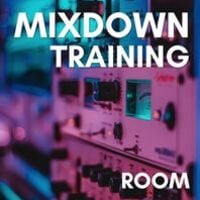I'm curious what everyone is really doing for a general mix flow. I think this could be insightful, especially for folks who are new to mixing. Here's my general flow:
1. Track prep - this is where I fix obvious tuning/timing/resonance issues and generally clean up the tracks to start mixing. I will normalize tracks here as well and I use a separate project for this. I export these tracks into a dedicated folder.
2. Organization - In a new project, in the right tempo (if there is a grid), I import all of the prepped tracks and group and buss them as needed. I mix through a mix buss. Some folks have a template for this. I don't mix for a living so I set it up each time.
3. Static volume and L/R balance - I bring up the faders. I typically use a top down approach and start with the elements that I think are important to the song. I spend a majority of my mix coming back around to this step. I think it is the most important step in the process.
4. Dynamic balance - I spend some time automating and arranging a little. I figure if I can get a good overall volume balance, I will use fewer plugins solving problems.
5. Mix bus EQ - Based on my reference track, I will EQ the mix bus to edge it closer to the reference. My mix buss also has a gain plugin to add 6 DBs of gain so that I reserve headroom. I have a few other goodies on there as well.
6. Bus processing EQ - I EQ my main busses a little to try to get them to sound pretty good before I touch the tracks (usually drums, backup vocals, guitars, keys, etc.)
7. Bus processing Compression - if needed and only lightly
8. Track-by-track EQ - mostly for tonality
9. Range-by-range EQ - deal with competing instruments at different frequency ranges
10. Compression - where needed (track or buss)
11. General problem solving - round and round for a while
12. FX - Delays, saturation, distortion, whacky stuff where needed
13. Spatial FX - Room and style reverbs/delays
14. Final check - round and round for a while
15. Final limiting - For this space, I limit to -14 LUFs. For mastering, I do not limit and try to give the mastering engineer 6-8 DBs of head room.
I think I spend the most time on steps 1-6. I don't get a chance to do all of these well every week, but I usually hit them in this general order. Having a process helps keep me on track.
1. Track prep - this is where I fix obvious tuning/timing/resonance issues and generally clean up the tracks to start mixing. I will normalize tracks here as well and I use a separate project for this. I export these tracks into a dedicated folder.
2. Organization - In a new project, in the right tempo (if there is a grid), I import all of the prepped tracks and group and buss them as needed. I mix through a mix buss. Some folks have a template for this. I don't mix for a living so I set it up each time.
3. Static volume and L/R balance - I bring up the faders. I typically use a top down approach and start with the elements that I think are important to the song. I spend a majority of my mix coming back around to this step. I think it is the most important step in the process.
4. Dynamic balance - I spend some time automating and arranging a little. I figure if I can get a good overall volume balance, I will use fewer plugins solving problems.
5. Mix bus EQ - Based on my reference track, I will EQ the mix bus to edge it closer to the reference. My mix buss also has a gain plugin to add 6 DBs of gain so that I reserve headroom. I have a few other goodies on there as well.
6. Bus processing EQ - I EQ my main busses a little to try to get them to sound pretty good before I touch the tracks (usually drums, backup vocals, guitars, keys, etc.)
7. Bus processing Compression - if needed and only lightly
8. Track-by-track EQ - mostly for tonality
9. Range-by-range EQ - deal with competing instruments at different frequency ranges
10. Compression - where needed (track or buss)
11. General problem solving - round and round for a while
12. FX - Delays, saturation, distortion, whacky stuff where needed
13. Spatial FX - Room and style reverbs/delays
14. Final check - round and round for a while
15. Final limiting - For this space, I limit to -14 LUFs. For mastering, I do not limit and try to give the mastering engineer 6-8 DBs of head room.
I think I spend the most time on steps 1-6. I don't get a chance to do all of these well every week, but I usually hit them in this general order. Having a process helps keep me on track.
11 props

Sep 25, 2023
Sep 26, 2023
Sep 26, 2023
Sep 27, 2023
Sep 27, 2023